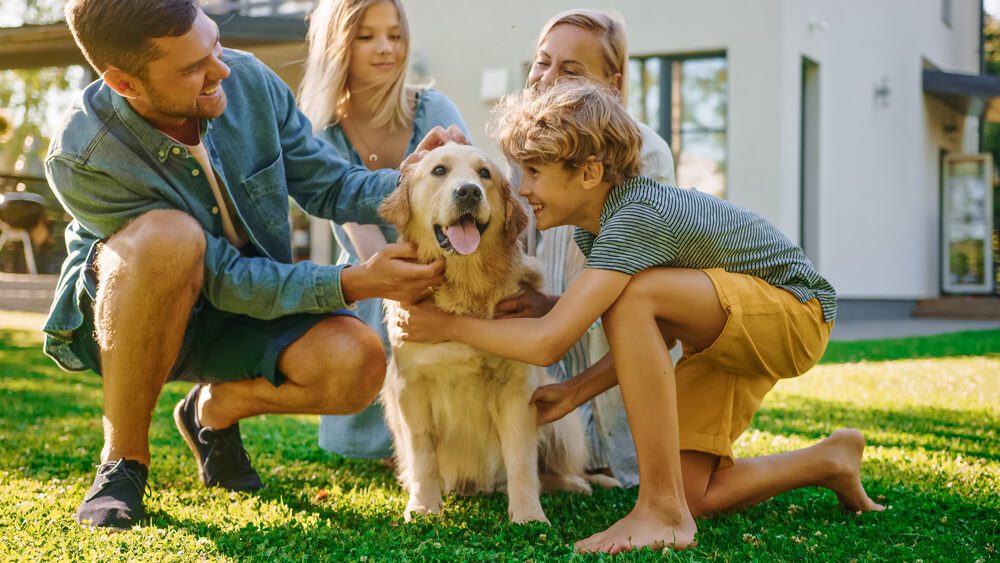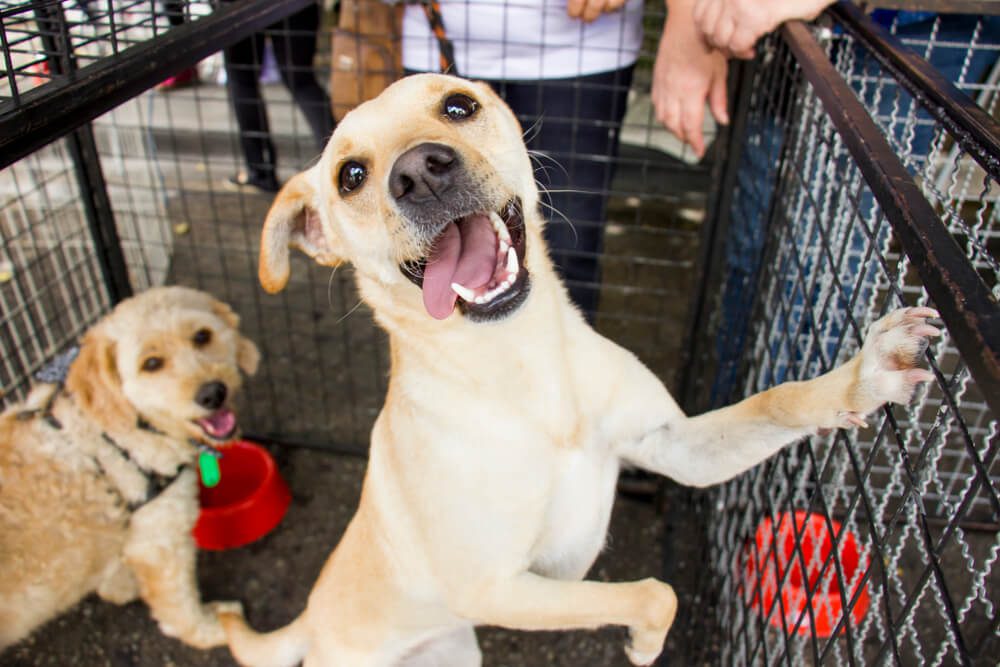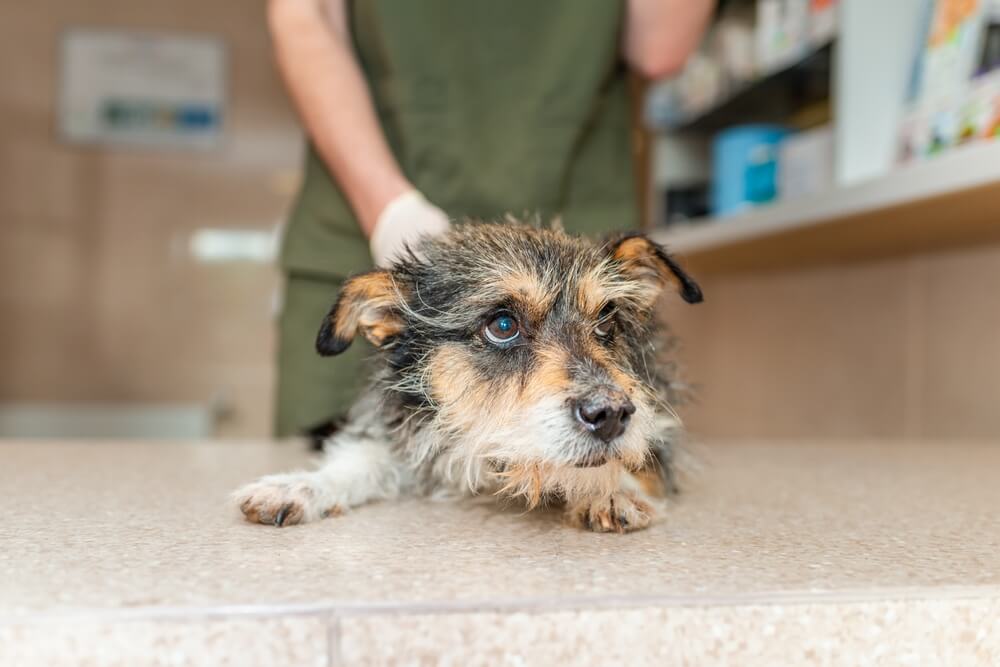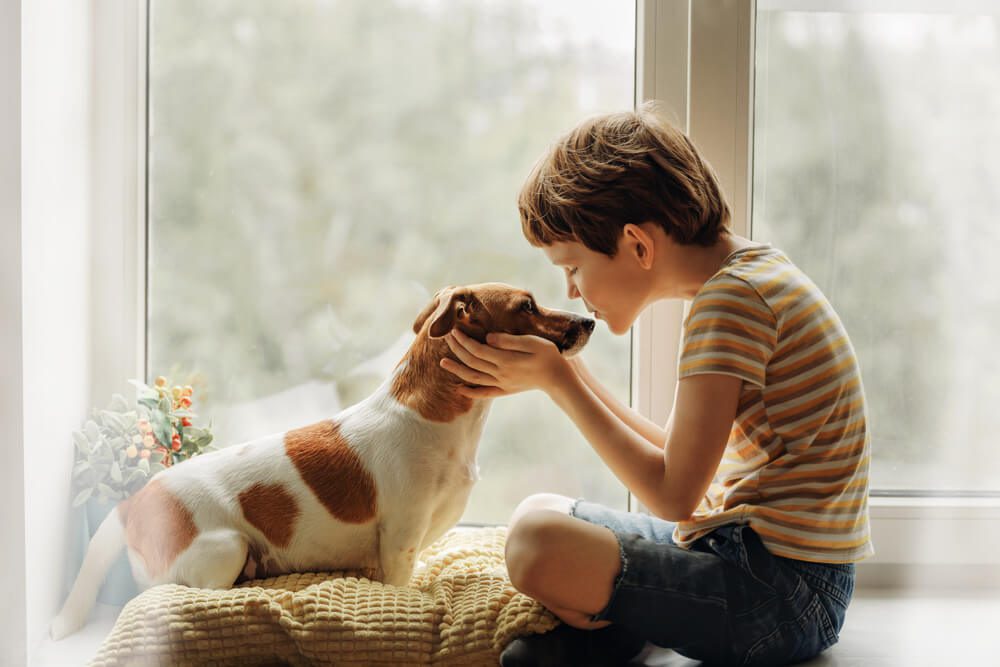How to Adopt a Dog
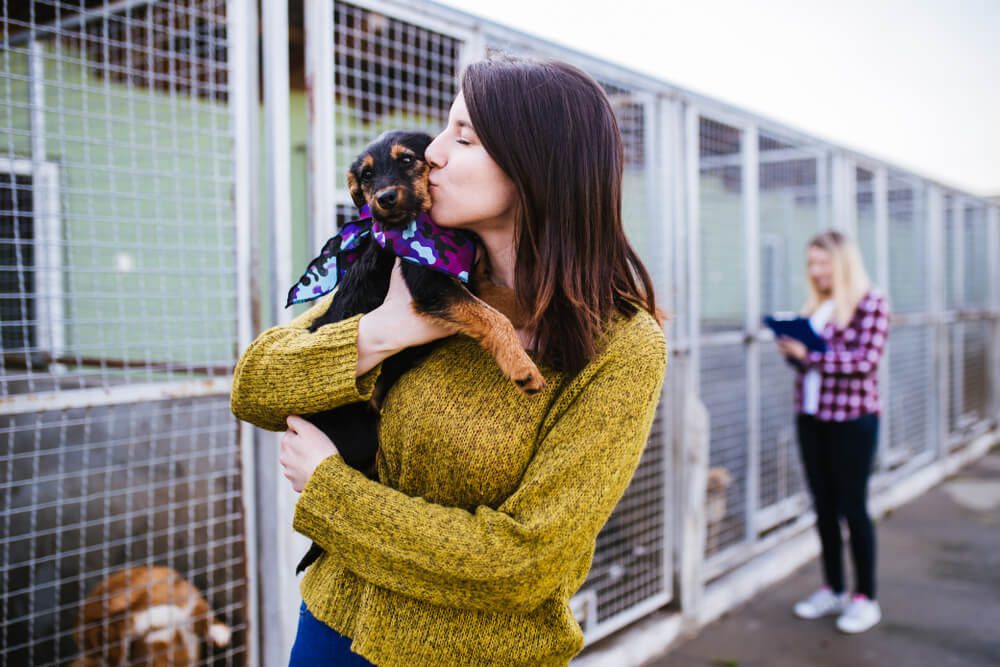
Table of Contents
How to Adopt a Dog
Are You Ready to Adopt a Dog?
You’re ready to adopt a dog when prepared for a big commitment. Pet owners should aim to give their new family member a forever home and approach the adoption process with clear expectations.
Long-term Loving Home
Dogs live an average of 10-15 years. Can you commit to caring for your new pet for over a decade? Or are you prepared for veterinary bills and end-of-life care if they’re a senior dog?
Will you be able to continue caring for your pet if your life changes with relocation, a growing family, or financial setbacks?
Consider The Cost
Pets cost money. They require food, veterinary care, and shelter. As they get older, wellness expenses may increase, so it’s good to set yourself up for these costs by applying for pet medical insurance. Make sure you have savings to cover expenses like:
- adoption fee
- de-worming and flea treatment
- annual or bi-annual wellness exams
- emergency funding
- vaccinations
- microchipping
- spay or neutering
- shelter, bedding, and pet essentials
What Breed of Dog is Right For You?
The right dog breed suits your lifestyle, activity levels, home, and family situation.
A Mixed Breed Shelter Pet
Many animal shelters have mixed-breed dogs, so your primary considerations should be
- energy level and exercise needs
- eventual size of the dog when fully grown
- behavior and tolerance for other pets or children
- noise level (do they bark a lot?)
- hair and shedding level (allergies)
- general maintenance and care
- drool level
- previous home and potential trauma
- age of dog
A Purebred, Rehomed Dog
If you are adopting a pet from purebred societies that rehome abandoned dogs, you probably have a specific dog breed in mind. You can easily research what to expect from a particular breed by reading up on their breed standard and traits. Similar to a mixed breed dog, you’ll want to know their compatibility level with your family setup.
For purebred pets, you want to be aware of common health concerns in that breed. Some breeds are prone to certain conditions. Knowledge and preventative care can help you avoid these issues in your pet.
Dog breed selectors can be a helpful tool to help you assess the right match for your home.
Are You Compatible with the Dog You’ve Found?
Ask yourself the following questions to realize what dog will fit right in?
- What is your home life? Do you have a garden or balcony? Do you have access to open spaces?
- Why do you want a dog? Do you need a guard dog or an emotional support animal?
- How playful should your dog be? Will you want to go running with your pet? Or are you looking for a calm dog who can play indoors? How energetic are you?
- What personality do you want in a dog? Family-friendly, spirited, aloof, easy-going?
- Should your dog be friendly with children and other pets?
Where to Adopt a Dog
You can adopt a dog at local no-kill animal shelters or humane societies. A dog adoption center usually takes dogs off the street or pets that have been abandoned or abused by their owners.
Rescue groups dedicate their time to pet adoption, and you may even find some rescue groups that only help and rehome specific dog breeds.
Some unique organizations place pets into foster homes. The benefit is that the dog will adjust and socialize more quickly in a smaller setting.
Rather than buying a puppy from a breeder or pet store, consider adopting senior dogs who need a new home. Special needs pets or disabled dogs can also make loving pets.
The Adoption Process: What to Expect
The adoption events may not be as easy as you think. Potential adopters must jump through a few hoops and are often carefully considered before the adoption is approved. This ensures that adoptable pets receive loving families and are safe homes.
1. Visit Your Local Animal Shelter
After assessing the type of dog that will fit right into your life, you want to visit your local adoption center or animal shelter. Meet a few dogs and get an idea of the pets available.
2. Look Online
Petfinder and similar sights may help you find the perfect new best friend. Continue your research of breeds and breed mixes to decipher if the pet may suit you.
3. Submit an Application Form
Once you’ve found the dog you’d like to adopt, you’ll need to submit a detailed application.
Here is an application form from Angel City Pits. This form is specifically for the pit bulls they rehome, but you will find similar questions on any dog adoption application form.
4. Expect a Home Visit
Most animal shelters will perform a home visit. This is to confirm that what you’ve put on your application is true and that your pet will have the necessary space, housing, and care to have a happy life.
5. Pay a Fee and Pick Up Your New Pet
An adoption fee is usually cheaper than buying a pet from a breeder and covers essential medical and administrative costs. If your application is successful, then you’ll be subject to paying the necessary fee. The Animal Humane Society charges between $129‒$767 for dog adoption. Costs can vary; some organizations may charge only $50 or less.
Preparing Your Home for a New Dog
Preparing your home for a new dog can take some time. Once you launch into a dog search and adoption process, begin equipping your home for a new pet.
Below you’ll find a tick list that will help get your home ready for a pet:
- Lock up toxins: Contain mediations, some human foods, insecticides, cleaning products, household and cleaning products, poisonous plants, etc.
- Install or secure fencing: Block small holes in fences to prevent adventurous small dogs from escaping. Restrict access to other unsecured places in your home.
- Prepare outside areas for your dog: Place fresh water outside and provide a kennel if your dog will spend most of its time outdoors.
- Buy a comfortable bed: Depending on the dog you adopt, find a suitable mattress. Look for a good dog bed brand that is washable, durable, and has a good filling that promises maximum comfort and warmth. Adult dogs with joint pain will do well with orthopedic beds.
- Provide an exit: Install a dog door for toilet breaks. If you live in an apartment, provide your dog with a pee pad or dog grass pad.
- Dog food station: Buy water and food bowls for your pet. Elevated food stations are a good choice for senior dogs. Only buy dog food when the adoption process has gone through.
- Stick to the basics: Before you buy out the entire pet store, stick to basics, like a good leash, dog brush, poop scoop, ID name tag, and blankets. Depending on your dog’s unique needs, you may need to return items or consider alternatives.
- Prepare your family: Talk to your family members about your desire for a dog. Together you can prepare the home and get excited for your new dog. Teach your young children rules on how to treat new dogs so they can socialize without mishaps. Allocating chores can encourage bonding and responsibility.
Your New Dog’s First Vet Visit
You’ll want to schedule a vet visit for your new dog as soon as possible. Even if the animal shelter has provided the initial vaccinations, you’ll want to confirm that your dog is in good health.
Find a local vet near you. Your dog’s health profile is essential, and introducing them to a veterinarian is an excellent first step.
Questions to Ask Your New Vet
Below you’ll find some questions to ask your new vet:
- What food should I feed my dog, and how much?
- Is my dog a good weight? How much exercise do they need?
- How do I care for my dog’s teeth?
- How often should I bring my dog for a checkup? (senior dogs need biannual checkups)
- Does my dog need spay/neuter surgery?
- What preventative medicine does my pet need for fleas, ticks, and worms?
- Should I train my dog? Any recommendations?
- Who should I use for pet insurance?
- What are my dog’s grooming needs?
- Is my new dog microchipped?
Caring for Your New Dog
Caring for your new dog will be a big adjustment as your family and pet become accustomed to the new setup and routine. The first 30 days are the most important as your dog becomes familiar with your family routine and their new environment.
Set up a routine for your pet. Your dog’s day-to-day routine must work with your own for a seamless transition. A feeding and exercise schedule can coincide with the time you’re available to engage with your dog. Feeding your dog can happen when making your morning coffee or prepping your evening meal.
Exercise your pet. Do you go for a morning jog? Or will your pet enjoy indoor dog yoga with you at the end of the day? If possible, include your dog in your leisurely beach walks and outings. Mental stimulation is also necessary; many toys or dog puzzles can provide cognitive fun for your dog.
Sign up for training. Dog obedience training or socializing classes can help your new pet to adjust to life with you. Anxious adopted dogs can benefit from social classes with other pets to become familiar with possible dog encounters at the park.
Be calm and patient. As your pet adjusts, expect accidents. They may need to break a habit of chewing things or jumping on the couch, but with time and behavioral training, your dog can adjust to the house rules and boundaries.















